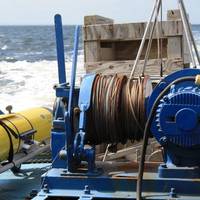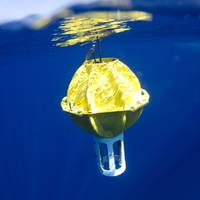Measuring the Hostile Ocean Beneath Hurricanes

Unmanned Vehicles Collect Data for Improving Storm ForecastsThe influences of ocean conditions and currents on living environments are now more widely appreciated—from the Earth’s climate and severe weather conditions to fisheries and biodiversity. Sustained and widespread measurements are needed to provide essential clues for understanding the oceans, for effective monitoring of environmental changes, and for helping to clarify the long-term effects of global warming.To meet this challenge, ocean researchers have invented various types of unmanned observing platforms.
Teledyne Webb's APEX® Deep MakesRecord Dive

Teledyne Webb Research's Autonomous Profiling Explorer (APEX®) Deep, dives to a record 6,000 meters. The record drive, in the Puerto Rico trench was launched from the R/V Kruger B out of San Juan, starting its dive the afternoon on February 25, 2013. Approximately twenty two hours later the float surfaced and transmitted its data over the Iridium satellite network. APEX floats are based on a buoyancy engine and have been commercially available since founder Douglas Webb opened Webb Research in 1982. APEX floats descend to a programmed depth where they become neutrally buoyant and drift.
Deep Profiling Float Descends to 4000-meters

Teledyne Webb Research's new version of its Autonomous Profiling Explorer (APEX®) makes a record 13,123 ft dive off Hawaii. APEX floats are based on a buoyancy engine and have been commercially available since founder Doug Webb started Webb Research in 1982. APEX floats descend to a programmed depth where they become neutrally buoyant and drift. After some interval, usually five to ten days, the buoyancy engine makes the float positively buoyant and it rises to the surface, where it transmits collected data such as temperature and salinity back to researchers via satellite communications.





